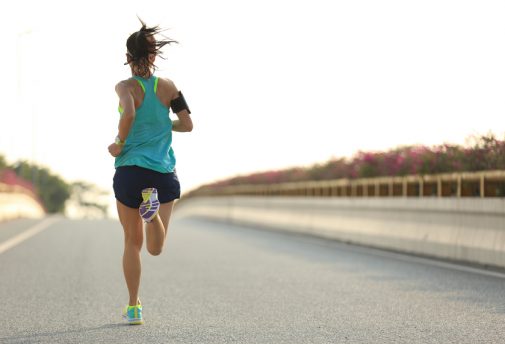Try these exercises on your off days

Over a long enough running career, many runners experience the disappointing pain of injury – one study even putting the rate at anywhere from 2.5 to 38 injuries per 1,000 hours of running.
While different bodies and running styles can mean different issues, a good way for all people to guard against injury and keep generally healthy is cross-training, says Julie Pate, a certified instructor at the Advocate Good Samaritan Hospital Health and Wellness Center in Downers Grove, Ill.
Pate, a running coach, who has competed in races from 5Ks to full marathons, said cross-training is not always well received by many runners.
“I think serious runners like to run,” she says. “Runners thrive on that feeling of exhilaration that you get from running – many athletes look at the total time they have to train and don’t want to give up precious training time to sports or activities other than running.”
Cross-training workouts for runners should accomplish two main goals, Pate says – stretching muscles that get tight while running and strengthening muscles that don’t get strong from running.
Pate says many runners perform exercises like spinning and biking that are similar to running. Those are helpful in that they strengthen some of the same muscles used in running but don’t help solve problems runners tend to have, including tight hip flexors and rounded, forward shoulders.
Instead, they should undertake exercises to specifically stretch their chest, hamstrings, quadriceps and calves and strengthen their core, hips and inner thighs.
Pate’s preferred methods?
Yoga and Pilates, which she teaches as a certified instructor at the Health and Wellness Center. The dynamic, body-weight focused styles of both exercises can help ensure muscles across your body are not only getting a workout but are also working together.
“Fitting in one yoga class and one Pilates class on running off days will help runners recover and prepare for the stresses of running,” she says.
Specifically, she encourages vinyasa yoga, featuring consistent movement, as opposed to holding poses for long periods of time to improve oxygen transportation and flexibility, and Pilates to lengthen muscle contraction and open the chest to improve gait. Pate also suggests new practitioners join a class led by a professional to ensure they get an effective, safe workout.
Some other exercises she suggested for runners looking to cross-train include:
Strength:
Abs/Core: Planks
Back: Rows or Lat pull-downs
Obliques: Side planks, or twisting motions like bringing your elbow to opposite knee
Hips: Hip adbuction
Inner thighs: Hip adduction
Flexibility:
Shoulders/Chest: Doorway stretch (picture putting your hands in a “touchdown” signal like they are on either side of a doorway)
Hamstrings: Straight leg raises
Quads: Holding your foot straight back toward your glutes while standing
Calves: Standing against a wall, put one foot behind you flat on the ground
Related Posts
Comments
One Comment
About the Author
Nathan Lurz, health enews contributor, is a public affairs coordinator at Advocate Good Samaritan Hospital. He has nearly a decade of professional news experience as a reporter and editor, and a lifetime of experience as an enthusiastic learner. On the side, he enjoys writing even more, tabletop games, reading, running and explaining that his dog is actually the cutest dog, not yours, sorry.


















Who is copy-editing this? “Pate, a running coach, has competed in races from 5Ks to full marathons – something not always well received by many runners.” It’s the cross training that is not well received, not the fact that Coach Pate has run 5Ks to full marathons.